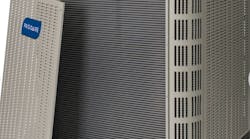During the presidential campaign of 2008, it seemed that a standard tagline issued by candidates was the promise of “green jobs” and how they would transform the U.S. economy. The amplification of this rhetoric occurred during the early days of the Obama administration when they touted green jobs and the green economy as key parts of the stimulus bill. In fact, in early 2009, the White House stated that, “One of the centerpieces of President Obama's agenda has been fulfilling the promise of green jobs.” So it caught my eye recently when I glanced at a headline that stated, “Number of Green Jobs Fails to Live Up to Promises,” and I was left wondering what happened.
I appreciate Obama's desire to not be unemployed after 2012 and decided to take a look not only at what is in the American Jobs Act but also how we pay for it, and its impact on the HVACR distribution industry.
What's In “The Bill?”
The American Jobs Act, which comes with an estimated price tag of $447 billion, or roughly half the cost of the 2009 American Recovery Act (aka Stimulus Bill), is a combination of tax cuts and spending measures. One of the more popular tax-related measures that should be expected to gain popular support is the elimination of the payroll tax for workers and cuts on employers' share of payroll taxes in half until they reach the $5 million mark on their payrolls. Another provision would extend the credit allowing businesses to expense 100 percent of their investments through 2012.
Obama also cited the passage of free trade agreements with South Korea, Colombia and Panama as a way to increase economic production. These agreements should pass Congress as the GOP has long supported the passage of these pacts, which have languished for four years, mainly due to the concerns of Congressional Democrats about the agreements' possible impact on union jobs. In order to pacify this key constituency, Obama also highlighted infrastructure projects (building schools, bridges and airports) as well as the extension of unemployment benefits, job training and tax credits for hiring the long-term unemployed.
How to pay for “The Bill?”
Obama's plan proposes increasing taxes on individuals in the highest income bracket, categorizing this as “eliminating tax breaks for billionaires.” Senate Democrats propose expanding the top income bracket by creating a new level that would begin at $1 million, with a tax at 40 percent for couples' or individuals' yearly earnings.
Additionally, the Obama administration has targeted oil and gas companies as a source of revenue, by aiming to repeal the Last In, First Out (LIFO) inventory accounting method. The proposal would end the current use of LIFO and retroactively tax companies that have used LIFO, generating upwards of $60 billion in additional revenue.
How does “The Bill” impact HVACR distribution?
On the positive side, I would imagine that the payroll tax relief may temporarily benefit some businesses. Additionally, an extension that will allow businesses to expense 100 percent of their investments may be a benefit to companies seeking to improve their warehouses, storefronts and equipment. Infrastructure spending in the bill has received much press attention. However, I remain skeptical of the federal government's ability to green light projects in a rapid manner that would create an immediate economic impact and would advise most distributors to not plan on much of a trickle down.
On the negative side of the ledger, I think Obama should re-examine his plan and understand that raising taxes on the top tax bracket does not solely impact millionaires and billionaires, but many small businesses who file their taxes as individuals. Small businesses are the largest job creators in the United States, and a tax increase on the folks who are supposed to help restart the economy does not seem prudent. The Senate Democratic proposal of tax increases for people making more than $1 million will resonate with the public. However, I remain skeptical that any tax increase could pass the current House of Representatives.
The President is obviously targeting gas and oil companies in his efforts to repeal LIFO; unfortunately, I believe that many in the HVACR industry would suffer collateral damage. Taxing profits that were never realized may force distributors to forgo expansion, cut staff or, in the worst case, close down. Even if a distributor does not use LIFO, there is a high probability that a supplier might. Thus, repealing LIFO could force higher prices throughout the supply chain.
The bottom line is that while I understand and respect the President for attempting to spark the economy, the negative consequences of the American Jobs Act far outweigh the benefits to those in the distribution industry.
Jon Melchi is HARDI's government affairs manager. Contact him at 614/345-HEAT (4328) or [email protected].





